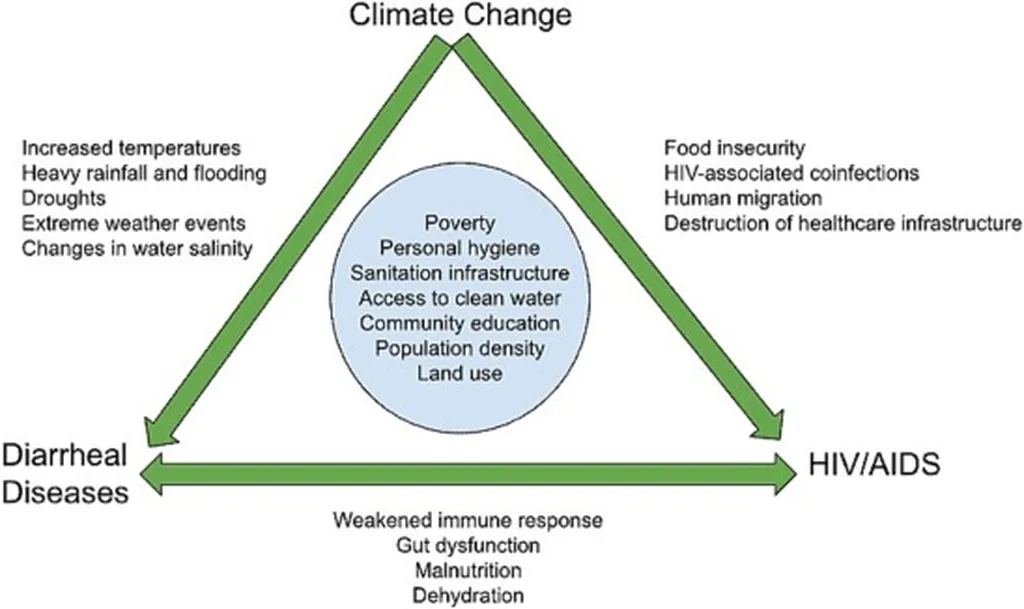In a world grappling with the far-reaching tendrils of climate change, a new study published in *Climate Risk Management* sheds light on an often-overlooked intersection: the impact of shifting climatic conditions on diarrheal diseases among people living with HIV/AIDS. Led by Mark Lieber from Stanford University’s Division of Infectious Disease and Geographic Medicine, the research presents a conceptual framework that could reshape how we approach public health and agricultural strategies in the coming decades.
Diarrhea is a common and often debilitating symptom for those living with HIV, even when the virus is suppressed through antiretroviral therapy (ART). As climate change alters temperature, precipitation, and extreme weather events, the prevalence of diarrheal diseases is expected to rise globally. However, until now, few studies have explored how these changes will specifically impact people living with HIV (PLWHIV).
The study identifies multiple pathways through which climate change could exacerbate diarrheal diseases, including increased ambient and sea temperatures, changes in precipitation patterns, and extreme weather events like droughts, floods, and cyclones. These factors can alter water salinity and create breeding grounds for bacterial and protozoal pathogens, though not necessarily for viral pathogens. “PLWHIV are particularly vulnerable due to a dangerous combination of dehydration and malnutrition that often accompanies gastrointestinal infections,” explains Lieber. This vulnerability underscores the urgent need for targeted adaptation strategies.
For the agriculture sector, the implications are significant. Sustainable agriculture interventions will be crucial in mitigating the impact of climate change on diarrheal diseases. Farmers and agribusinesses may need to adopt climate-resilient crops and practices to ensure food security and reduce the risk of contamination in water sources. “Improving the durability of water and sanitation infrastructure is equally important,” Lieber notes, highlighting the need for robust systems that can withstand extreme weather events and ensure access to clean water.
The study also emphasizes the importance of optimizing medical supply chains to ensure that PLWHIV have access to necessary treatments and support. This could open up new opportunities for agribusinesses to collaborate with healthcare providers and governments to develop integrated solutions that address both agricultural and public health challenges.
As we look to the future, this research could shape the development of climate-adaptive strategies that protect vulnerable populations while fostering sustainable agricultural practices. By understanding the complex interplay between climate change, diarrheal diseases, and HIV, we can better prepare for the challenges ahead and work towards a more resilient and equitable world.

